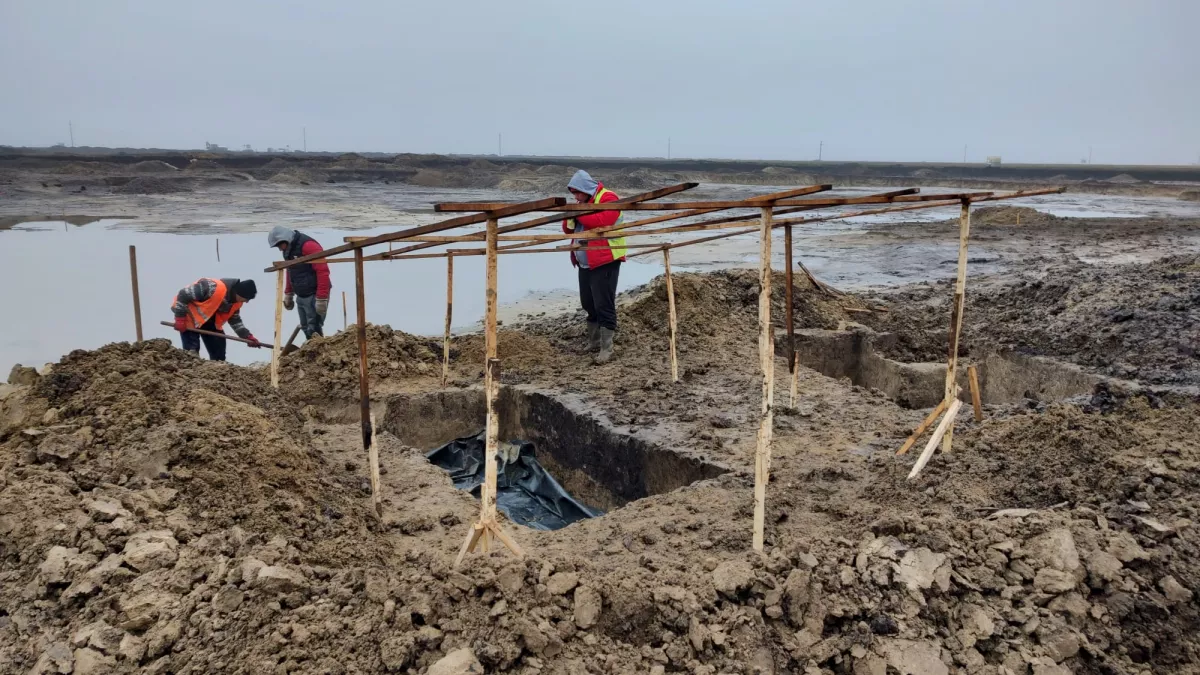
In the News: Archaeologists Discover ‘Princely’ Horse
A warrior and his horse, estimated to be from the 5th century CE, have been found in Romania.
Stumbled upon during the construction of a new road near the town of Mizil, archaeologists are now rushing to preserve the treasure-laden tomb that dates back to when the region was controlled by the Huns… as in Attila the Hun.
The Huns were nomadic horsemen that conquered lands and people all the way to Rome during the fourth and fifth centuries CE.
History notes the Huns were “equestrian masters [that] revered horses and sometimes slept on horseback.”
Folk tales often credit the Huns with the invention of the stirrup, but that has largely been discredited. The location is correct — the Asian steppes — but the timing is off since stirrups most likely originated centuries before, in the 2nd century BCE.
According to American Equus, “The earliest evidence of a stirrup was excavated in India, during 2nd century BCE. It was a cornelian seal depicting a rider on a horse, his foot resting on a stirrup made of wood in a hook style L-shape format.”
Another study suggests, “In the case of the Huns, there is no evidence of stirrups, either in textual or archaeological sources.”
It’s interesting to note, though, that the Huns weren’t defined as “Huns” until the 4th century CE and most likely originated from Kazakhstan or the nomadic Xiongnu people, who, you guessed it, were known for terrorizing the Asian steppes on horseback in 318 BCE, right around the time the stirrup was allegedly invented.
Lead archeologist, Silviu Ene of the Vasile Pârvan Institute of Archeology in Bucharest, Romania, told Live Science, “[This] tomb is filled with more than 100 artifacts, including weapons, gold-covered objects and pieces of gold jewelry inlaid with gemstones.”
The ornateness of the grave goods has led researchers to believe they belonged to a member of the ruling class, but it is the horse’s remains that make the find truly remarkable.

The complete skeleton of the warrior and the skull and leg bones of his horse were found in the tomb. The man seems to have been buried wearing a gold mask.(Image credit: CNAIR/Vasile Pârvan Institute of Archeology)
In 1990, Denis Sinor wrote in The Cambridge History of Early Inner Asia that no horse remains had ever been found in Hunnic graves, despite the fact that Roman historians claimed the Huns spent nearly their whole lives in the saddle.
So, while only a gilded saddle, skull, and leg bones of a horse were found at the Mizil site, the discovery could still yield fascinating details about what kind of horses the Huns rode and even where they originated.

Part of a saddle covered with gold-leaf and other objects associated with warhorses were found in the tomb.(Image credit: CNAIR/Vasile Pârvan Institute of Archeology)
In January, Ene told Live Science the archaeological investigation is “half finished.” The bones and artifacts will be cleaned and eventually put on public display, while the road is still scheduled to be laid over the entire site.
Go riding.
Amanda Uechi Ronan is an author, equestrian and wannabe race car driver. Follow her on Instagram @uechironan.







